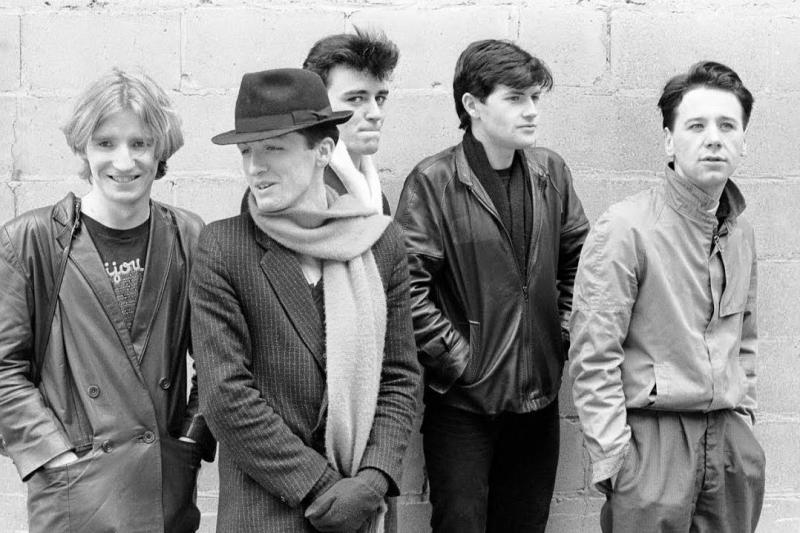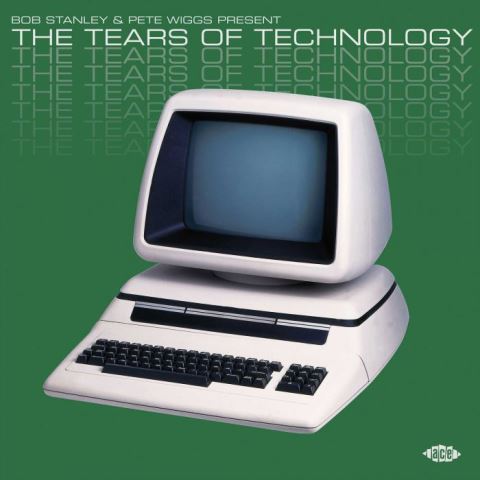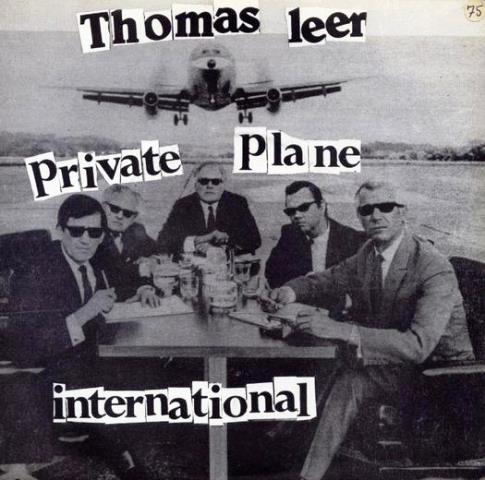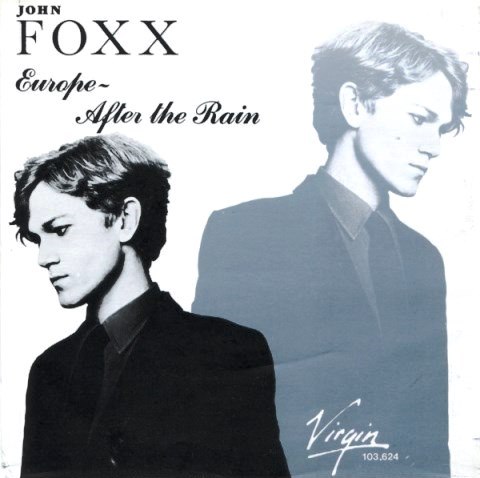Reissue CDs Weekly: Bob Stanley & Pete Wiggs Present The Tears of Technology | reviews, news & interviews
Reissue CDs Weekly: Bob Stanley & Pete Wiggs Present The Tears of Technology
Reissue CDs Weekly: Bob Stanley & Pete Wiggs Present The Tears of Technology
Winning celebration of the synthesiser as an enabler for expressing emotion

“Like mellotrons before them, synthesisers could project a strange and deep emotion – something in the wiring had an inherent melancholy.
The strapline from the back of the Saint Etienne-compiled The Tears of Technology lays out the 20-track collection’s mission statement: to rescue synth-infused pop from being seen as cold, rigid and robotic.
 And, indeed, some rockers did have problems with the synthesiser. Queen put the words "No Synthesizers!" (with a “z”) on the sleeves of their Queen II, Sheer Heart Attack, A Night at the Opera and A Day at the Races albums. This was a reaction to a review of their first album which mistakenly noted the presence of a synthesiser. The band were ticked off that Brian May’s guitar skills had been attributed to a machine, so felt the need to declare they were a synth-free zone.
And, indeed, some rockers did have problems with the synthesiser. Queen put the words "No Synthesizers!" (with a “z”) on the sleeves of their Queen II, Sheer Heart Attack, A Night at the Opera and A Day at the Races albums. This was a reaction to a review of their first album which mistakenly noted the presence of a synthesiser. The band were ticked off that Brian May’s guitar skills had been attributed to a machine, so felt the need to declare they were a synth-free zone.
Then, there was the Clash’s Joe Strummer who, on TV in 1976, disparaged bands who had a Moog synthesiser. For him, it showed they had too much money and were overblown.
Two reasons, then, to dislike the synthesiser: it could replace humans (and undetected at that), and it signified needless musical bloating. If it was integral to ELP, so be it. But in favourable contrast, the synth was also a fundamental ingredient of Popul Vuh’s organic, verdant soundscapes. And in the period addressed by The Tears of Technology, a home-built synth underpinned Joy Division’s “Atmosphere”: that’s not heard here, but it is the acme of the characteristic this compilation celebrates.
 Joy Division were not alone. Synths became increasingly prevalent as the prices came down. Combos which were actual or little-more-than garage bands could incorporate them into their make-up. This, mostly DIY, aspect of British musical history was addressed in 2016 by the four-CD set Close to the Noise Floor.
Joy Division were not alone. Synths became increasingly prevalent as the prices came down. Combos which were actual or little-more-than garage bands could incorporate them into their make-up. This, mostly DIY, aspect of British musical history was addressed in 2016 by the four-CD set Close to the Noise Floor.
Instead of seeking to be a definitive statement focussing on an aesthetic groundswell, The Tears of Technology is about capturing a mood which was commandingly and influentially to the fore on Kraftwerk’s 1975 album Radioactivity – where synthesisers were warm and employed to make a music which was romantic. Employed is a key word: a synthesiser did whatever its operator wanted it to do. Not the other way around.
Then, later, Tubeway Army hit big with “Are ‘Friends’ Electric?” and things took a cold, dehumanising turn. Ironic, considering bandleader Gary Numan’s prime influence was the John Foxx-era Ultravox, a band which imbued its use of the synthesiser with emotion, just as David Bowie had done on the Eno-assisted Low. Which is where The Tears of Technology comes in.
 The Tears of Technology catches music in a brief, three-to-five year window (the date range of the tracks is 1978 to 1984) from when analogue synthesisers became affordable up to the arrival of digital technology – including sequencing and the linking of instruments to computers. When Kraftwerk sang of a computer world, they were not yet making music on computers but still using analogue instrument technology.
The Tears of Technology catches music in a brief, three-to-five year window (the date range of the tracks is 1978 to 1984) from when analogue synthesisers became affordable up to the arrival of digital technology – including sequencing and the linking of instruments to computers. When Kraftwerk sang of a computer world, they were not yet making music on computers but still using analogue instrument technology.
So what’s heard was made by people grappling with new instruments and bending them to their will instead of inertly sitting, staring at screens. A fascinating period, caught here with an ear to the music itself.
Beyond noting that every one is a winner, little needs to be said about the tracks collected. There are wonderful obscurities from Electronic Circus, Patrik Fitzgerald and Illustration. Thomas Leer’s era-defining, oft-compiled “Private Plane” is as wonderful as ever. John Foxx’s elegiac “Europe After the Rain” is an aural swoon. The otherworldly, “Radioactivity” indebted Simple Minds album track “Real To Real” is extraordinarily beautiful. Thankfully, no one on The Tears of Technology was swayed by the anti-synth nay-sayers.
- Next week: Early Years - Madagascar Cassette Archives. Compilation of tracks originally issued on cassette only by the Madagascar guitarist Damily
- More reissue reviews on theartsdesk
- Kieron Tyler’s website
Explore topics
Share this article
The future of Arts Journalism
You can stop theartsdesk.com closing!
We urgently need financing to survive. Our fundraising drive has thus far raised £49,000 but we need to reach £100,000 or we will be forced to close. Please contribute here: https://gofund.me/c3f6033d
And if you can forward this information to anyone who might assist, we’d be grateful.

Subscribe to theartsdesk.com
Thank you for continuing to read our work on theartsdesk.com. For unlimited access to every article in its entirety, including our archive of more than 15,000 pieces, we're asking for £5 per month or £40 per year. We feel it's a very good deal, and hope you do too.
To take a subscription now simply click here.
And if you're looking for that extra gift for a friend or family member, why not treat them to a theartsdesk.com gift subscription?
more New music
 Waylon Jennings' 'Songbird' raises this country great from the grave
The first of a trove of posthumous recordings from the 1970s and early 1980s
Waylon Jennings' 'Songbird' raises this country great from the grave
The first of a trove of posthumous recordings from the 1970s and early 1980s
 Lady Gaga, The Mayhem Ball, O2 review - epic, eye-boggling and full of spirit
One of the year's most anticipated tours lives up to the hype
Lady Gaga, The Mayhem Ball, O2 review - epic, eye-boggling and full of spirit
One of the year's most anticipated tours lives up to the hype
 Slovenian avant-folk outfit Širom’s 'In the Wind of Night, Hard-Fallen Incantations Whisper' opens the door to inner space
Unconventional folk-based music which sounds like nothing else
Slovenian avant-folk outfit Širom’s 'In the Wind of Night, Hard-Fallen Incantations Whisper' opens the door to inner space
Unconventional folk-based music which sounds like nothing else
 'The Art of Loving': Olivia Dean's vulnerable and intimate second album
Neo soul Londoner's new release outgrows her debut
'The Art of Loving': Olivia Dean's vulnerable and intimate second album
Neo soul Londoner's new release outgrows her debut
 Music Reissues Weekly: The Peanut Butter Conspiracy - The Most Up Till Now
Definitive box-set celebration of the Sixties California hippie-pop band
Music Reissues Weekly: The Peanut Butter Conspiracy - The Most Up Till Now
Definitive box-set celebration of the Sixties California hippie-pop band
 Doja Cat's 'Vie' starts well but soon tails off
While it contains a few goodies, much of the US star's latest album lacks oomph
Doja Cat's 'Vie' starts well but soon tails off
While it contains a few goodies, much of the US star's latest album lacks oomph
 Mariah Carey is still 'Here for It All' after an eight-year break
Schmaltz aplenty but also stunning musicianship from the enduring diva
Mariah Carey is still 'Here for It All' after an eight-year break
Schmaltz aplenty but also stunning musicianship from the enduring diva
 Album: Solar Eyes - Live Freaky! Die Freaky!
Psychedelic indie dance music with a twinkle in its eye
Album: Solar Eyes - Live Freaky! Die Freaky!
Psychedelic indie dance music with a twinkle in its eye
 Album: Night Tapes - portals//polarities
Estonian-voiced, London-based electro-popsters' debut album marks them as one to watch for
Album: Night Tapes - portals//polarities
Estonian-voiced, London-based electro-popsters' debut album marks them as one to watch for
 Album: Mulatu Astatke - Mulatu Plays Mulatu
An album full of life, coinciding with a 'farewell tour'
Album: Mulatu Astatke - Mulatu Plays Mulatu
An album full of life, coinciding with a 'farewell tour'
 Music Reissues Weekly: Sly and the Family Stone - The First Family: Live At Winchester Cathedral 1967
Must-have, first-ever release of the earliest document of the legendary soul outfit
Music Reissues Weekly: Sly and the Family Stone - The First Family: Live At Winchester Cathedral 1967
Must-have, first-ever release of the earliest document of the legendary soul outfit

Add comment